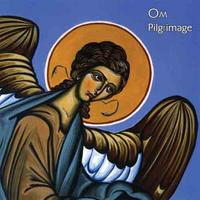4




















| Thumbs Up |
| Received: 35,741 Given: 17,041 |

Transylvania’s Devil Churches
Source: http://www.darksideofhistory.com/mon...evil-churches/
The Devil in Eastern Orthodox Iconography
Representations of the Devil and his fallen brethren are not uncommon in Eastern Orthodox Christianity. On the contrary, devils are traditional to Orthodox icons and church murals depicting the Last Judgment and various scenes of Hell. Some Romanian Orthodox churches from Transylvania, dating from the 13th to the 19th century, house some of the most fascinating such depictions on their walls. These churches are popularly known across Romania as bisericile cu draci – the devil churches. Here are a few of them:
Saint Archangel Michael Church, Gurasada, Hunedoara County
Church of Saint Archangel Michael, Gurasada, Hunedoara County. The church was built in the 13th century.
Judgment Day scenes depicting devils tormenting sinners: some are hanged, others are burned and others are boiled in cauldrons. In the second picture we can see an angel with golden wings struggling to save a soul from the grasp of a devil in an apocalyptic tug of war. The murals date back to 1765.
Church of the Holy Archangels Michael and Gabriel, Almaș-Săliște, Hunedoara County
Church of the Holy Archangels Michael and Gabriel, Almaș-Săliște, Hunedoara County. The wooden church dates back to the 1700s.
Captain Potelici, a devil, is seizing two sinners. The one on the left is “the miller who overtaxes [his fellow villagers]”, seen with a millstone tied to his neck and a measuring cone on his head. During those times, the village miller used to keep a percentage of grain from each villager as a tax for grinding it into flour. The sinner on the right is “the innkeeper who dilutes wine with water and sells it by the small cup [for full price]”. Next to them, further right, we can see “the woman who doesn’t make babies” with snakes biting her breats. Lastly, a devil named Cocoti is riding a woman like a horse: “the witch who summons the Devil and sends him to the church service”.
Top panel: a devil named Raija is tying together “the fornicators, the whores, the thieves, and the witches who hex milk”. To the right, Notea is carrying “the officials and the jurors who pass crooked judgment” in a wheelbarrow. He is assisted by another devil named Deneadic.
Bottom panel: devils Cafu and Pufu pamper the “man who sleeps all Sunday morning”, rewarding him for skipping the Sunday service; next to them, to the right, we can see “the sluggish and slothful woman” spinning wool.
The murals from the Almaș-Săliște church were painted in 1819. Their creator remains unknown.
Church of the Holy Archangels Michael and Gabriel, Corund, Satu Mare County
Church of the Holy Archangels Michael and Gabriel, Corund, Satu Mare County. The wooden church was built in 1723.
Pronaos mural depicting Death (Moarte) and a personification of bubonic plague (Ciumă) riding a white horse; Ciumă most likely represents the first Horseman of the Apocalypse – Pestilence – the White Horse being sometimes interpreted as infectious disease, most commonly bubonic plague.
Another mural from the Corund wooden church shows Lucifer sitting at the Gates of Hell, “welcoming” the souls of the lost and the damned. One devil is seen on top of the gateway, holding a black flag – a symbol of death – and blowing a bugle to announce the arrival of the miserable sinners. Other devils are torturing these damned souls and driving them towards Lucifer and an eternity in Hell.
Church of the Holy Archangels Michael and Gabriel, Runc, Alba County
Church of the Holy Archangels Michael and Gabriel from Runc, built in 1852. The original church, built in 1733, was desecrated and burned to the ground by the Austro-Hungarians during the 1848 Revolution.
Saint Charalambos binding the Devil, depicted as a bearded man with horns, goat ears, a tail (not visible in the picture) and wielding a scythe. The image and role of the Devil was conflated with that of Death in the social imaginary of Transylvanian Romanians.
Last Judgment scene: Hellmouth.

















| Thumbs Up |
| Received: 477 Given: 288 |

There's are better reperesentations in East Romania (Moldova), but always Transylvania will get more clicks, because stupid legends.














| Thumbs Up |
| Received: 149 Given: 0 |

Castlevania














| Thumbs Up |
| Received: 3,596 Given: 409 |

The Guraszáda church was originally Catholic until the 15th century. The Romanians occupied the church after a Turkish raid presumbly, when the Hungarian population destroyed. There are Saint Ladislaus frescoes on the wall of the 13th century part of the building. These imaginations of the Devil and the Hell are 17-18th century phenomenons in the Romanian folk art.














| Thumbs Up |
| Received: 3,596 Given: 409 |

There are not vampires in the Hungarian folk myths also! It's a modern, Western European phenomenon, basically part of the late-western mythological syncretism and not an original folk figure. The striga was basically witch in the Hungarian folk tales. A Hungarian provision about the types of the witches denies the existence of the strigois as nonsense (in king Kálmán's code) from the 12th century.
"De strigis vero quae non sunt, nulla questio fiat."
There are currently 1 users browsing this thread. (0 members and 1 guests)
 România
România
Bookmarks